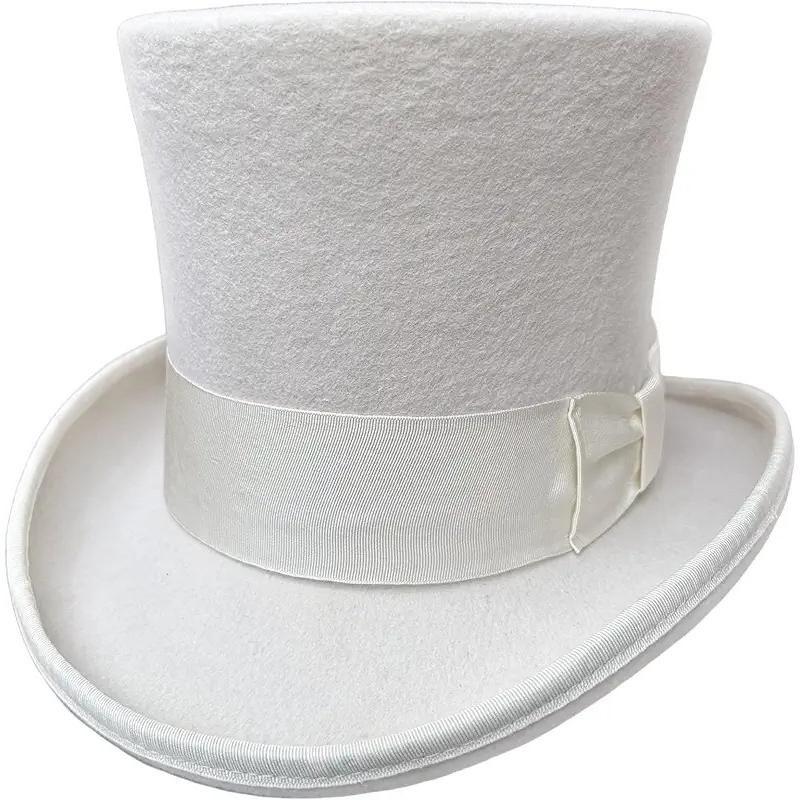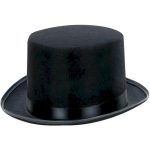The top hat, a classic symbol of elegance and sophistication, has adorned the heads of many fashionable individuals throughout history. From its inception in the late 18th century to its status as a revered piece of formal attire today, the top hat serves multiple functions that go beyond mere aesthetics. But what is the purpose of a top hat? Understanding its role in fashion, culture, and social traditions sheds light on why this headpiece has maintained its relevance over the years. Traditionally, the top hat has been associated with the upper class and formal occasions, often worn during significant events such as weddings, galas, or even horse races. Despite evolving fashion norms, the top hat continues to evoke a sense of grandeur and formality, making it an essential consideration for those who wish to add a touch of class to their attire. This article will delve into the history of the top hat, its various purposes, its cultural significance, and how it remains a staple in contemporary fashion.
A Brief History of the Top Hat
To appreciate the purpose of a top hat, one must first consider its rich history. The top hat has a story that intertwines with cultural evolution, fashion, and social status.
Early Origins
The top hat is believed to have originated in the late 18th century, with the first documented appearance in 1797. A fashionable London hat maker named John Hetherington is often credited with introducing it to the public. At the time, it represented a significant departure from the bombé and tricorn hats that dominated men’s fashion.
The 19th-Century Fashion Sensation
By the 19th century, the top hat became an essential part of formal dress for men in high society. It gained popularity during the Regency and Victorian eras, symbolizing status and sophistication. It was worn by gentlemen in formal portraits, theaters, and outdoor events—creating a perception that linked the top hat with wealth and prestige.
The Top Hat in the 20th Century
While the top hat maintained its status throughout the early 20th century, changes in fashion began to influence its popularity. The decline of formal dress styles in everyday life led to the top hat gradually being reserved for very formal occasions, such as weddings, balls, and other ceremonial events.
The Top Hat Today
Today, the top hat is often associated with traditional formal events, including weddings and gala ceremonies. Furthermore, it remains a staple in certain professions, such as circus performers or magicians, who continue to utilize it as an iconic piece of attire.
The Purpose of a Top Hat
Now that we have explored the history of the top hat, let’s discuss its purposes in greater detail. The top hat serves several functions that contribute to its lasting appeal:
1. Symbol of Elegance and Formality
One primary purpose of wearing a top hat is to signify elegance and formality. When men don this hat for formal events, it enhances their outfits and communicates respect for the occasion.
2. Status Indicator
Traditionally, the top hat has acted as a symbol of social status. In the past, wearing one indicated that a person belonged to the upper class or was attending an event of notable importance. This status symbolism continues today, as the top hat is still associated with formality.
3. Cultural and Historical Significance
The top hat carries cultural significance in many traditions. Its presence at certain events, like horse races or high-society gatherings, connects individuals to a rich cultural heritage, reinforcing social bonds and shared experiences.
4. Functional Aspects
Besides its symbolic implications, the top hat also provides practical function. The wide brim offers shade and protection from the elements, while its structured design allows for comfortable wear without obstructing visibility.
5. Fashion Accessory
The top hat serves as a fashionable accessory that completes an outfit. Many modern designers create contemporary variations of the top hat, incorporating different fabrics, colors, and embellishments to suit modern aesthetics.
6. Performance and Entertainment
In the realm of entertainment, performers, especially magicians and comedians, frequently use the top hat as part of their act. Its association with magic creates an element of surprise, aligning with traditional tricks performed by stage artists.
Choosing the Right Top Hat for Your Needs
If you’re considering adding a top hat to your wardrobe, you’ll want to know more about the factors that influence your choice. Below are some key considerations for selecting the ideal top hat:
1. Style and Era
Top hats come in various styles inspired by different eras. Choosing between classic designs and modern iterations can help you find the one that fits your preferences best.
2. Material Selection
Typical materials used in top hats include felt, silk, and straw. Each material contributes to the overall look and feel of the hat, so consider the setting in which you’ll wear it:
- Felt: Often used for formal events, felt provides warmth and structure.
- Silk: Creates an elegant sheen suitable for high-class functions.
- Straw: Ideal for summer events, straw hats offer breathability and lightness.
3. Color Choice
While black is the most common color associated with top hats, you can find them in other colors and patterns. Consider the color of your outfit and select a hat that complements your ensemble.
4. Proper Fit
Ensuring the right fit is essential for comfort and style. Top hats typically come in various sizes, so measure your head and refer to sizing charts provided by retailers to ensure a proper fit.
5. Occasion
Determine the occasion for which you plan to wear the top hat. Formal events such as weddings, opera nights, or galas typically call for a more traditional style, while themed parties or costume events may allow for more creative interpretations.
Styling Tips for the Top Hat
Once you have chosen the perfect top hat, knowing how to style it can elevate your overall look. Here are some styling tips for incorporating the top hat into your outfit:
1. Dress Appropriately for the Occasion
Always match your attire to the occasion you’re attending. For formal events, traditionally tailored suits or tuxedos work best. In contrast, for themed events, feel free to experiment with more eclectic styles.
2. Coordinating Accessories
When wearing a top hat, consider coordinating accessories, such as pocket squares, ties, and gloves. These elements complete your outfit and help to unify your look.
3. Keep the Outfit Balanced
Avoid overwhelming your outfit with excessive embellishments when wearing a top hat. The hat itself is a statement piece, so balance it with simpler attire to maintain focus.
4. Opt for Proper Care
When not in use, store your top hat in a protective box or cover to maintain its shape and prevent damage. Regularly clean it according to the material’s care guidelines to ensure its longevity.
5. Confidence is Key
Regardless of the occasion, wear your top hat with confidence. A statement piece like this exudes elegance and sophistication, and your confidence will enhance your overall appearance.
Modern Interpretations of the Top Hat
As fashion evolves, modern interpretations of the classic top hat continue to emerge. Contemporary designers are reimagining this timeless accessory, incorporating unique elements that resonate with today’s fashion landscape.
1. Casual Styles
Some designers create casual variations of the top hat by crafting softer materials and incorporating less structure. These styles provide a relaxed look while still maintaining the essence of the original design.
2. Sustainable Fashion
With a growing interest in sustainable fashion, some brands focus on creating top hats made from eco-friendly materials and ethical production practices. This trend allows consumers to enjoy stylish accessories while making conscious choices.
3. Diverse Cultural Influences
As fashion becomes increasingly global, cultures intertwine with design. Modern top hats may reflect diverse cultural values and aesthetics, embracing patterns, colors, and materials inspired by various regions worldwide.
4. Themed and Costume Variations
More whimsical, themed, or eccentric designs have become popular for parties and costumes. These creatively designed top hats can add a fun twist, allowing for self-expression and showcasing personal style.
Conclusion
What is the purpose of a top hat? The top hat remains an iconic accessory that transcends time and trends. Understanding what the purpose of a top hat is, along with its rich history and modern interpretations, provides valuable insights into its significance in today’s fashion landscape. When considering how and when to wear a top hat, remember the importance of selecting the right type, material, and size for your individual needs and style.
Whether for a formal occasion or a whimsical themed event, a well-chosen top hat can elevate your look and reflect your personality. By incorporating it seamlessly into your outfits and being mindful of the care it requires, you can enjoy the timeless elegance this classic piece brings. Embrace the allure of the top hat and celebrate its place in fashion history while creating your modern narrative.

